
Every person is unique!
Our experienced team will be happy to advise you in detail and free of charge on all matters relating to your health. Book your consultation appointment now:
Respiratory diseases - heal naturally with vital mushrooms
May 31, 2020
Dipl.-Biol. Dorothee Ogroske et al.
On average, an adult person suffers from respiratory illness two to four times a year. Children are affected even more frequently. The disease is accompanied by unpleasant symptoms such as cough, shortness of breath and nasal discharge. Those who have good defenses are much less likely to fall ill.
Vital mushrooms have the ability to strengthen the immune system and keep it in a stable balance. In addition, they bring relief from acute as well as chronic respiratory complaints. Learn more about the different respiratory diseases, how you can strengthen your defenses naturally and which vital mushrooms help with which symptoms.
How do respiratory diseases develop?
Along with the digestive tract, our respiratory tract is the largest surface area of the body in direct contact with the environment. This border must be protected. This is exactly what mucous membranes in the respiratory tract are for. Their mucus keeps antigens from entering the body and clears the airways of pathogens as well as foreign bodies. If this defense mechanism is on constant alert due to various influences, which we will explain in a moment under “Risk factors”, increased mucus production occurs. This manifests as coughing with often viscous sputum.
Risk factors
Causes of respiratory infections
Flu infections, which also affect the respiratory tract, are often triggered by viruses. Basically, corresponding viruses are ubiquitous in our environment. They are transmitted from one person to another via droplet infection (e.g., coughing, sneezing), aerosols (airborne particles containing the virus), or via smear infection (e.g., nasal secretions on the hands). The viruses love cold temperatures and can survive for long periods at temperatures near freezing. The blood flow to our mucous membranes, on the other hand, is drastically reduced when it is cold. This impairs the immune defenses of the respiratory tract and makes it easier for pathogens to enter. Below is a list of possible viruses and their effects on our respiratory system:
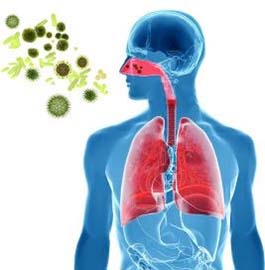 Rhinoviruses > Rhinitis
Rhinoviruses > Rhinitis- Parainfluenza viruses > Sore throat (pharyngitis), hoarseness
- RS viruses > sore throat (tonsillitis), cough
- Corona viruses > sore throat, bronchitis, pneumonia, cough, sputum, fever
- Influenza viruses > Sore throat, muscle and joint pain, cough, bronchitis
- Adenoviruses > Cough, sputum, fever (bronchitis)
A little respiratory science
The natural protection of the respiratory tract
- Cilia: These are small protrusions in the cell membrane that look like hairs under the microscope. They are constantly in motion and strive to transport foreign bodies and mucus out of the airways in the direction of the throat. (Mucocilliary Clearance). This self-cleaning mechanism is impaired by direct and indirect hypothermia (cold feet, cold neck).
- Goblet cells: These cells are responsible for the production of mucus, which in turn is needed to moisten the air we breathe.
- Club cells: These cells are located in the smallest bronchi and in the alveoli. They produce a secretion with different proteins. On the one hand, these serve the immune defense in the lungs and, on the other hand, they lower the surface tension in the alveoli so that the lungs can develop well.

Every person is unique!
Our experienced team will be happy to advise you in detail and free of charge on all matters relating to your health.
The importance of the intestine for the respiratory tract
Intestine and immune system are closely related. Thus, a healthy intestinal environment is the basis for strong defenses. The immunological processes in the Peyer’s plaques under the intestinal mucosa, the intestine-associated immune system, affect the defenses of the mucous membranes in the respiratory tract: When the intestinal mucosa comes into contact with an antigen, B lymphocytes form in the mucosa-associated lymphoid tissue (MALT). These transform into lymphoblasts, which migrate via lymphatic vessels to the lymph nodes. From there, they enter the blood directly via the thoracic duct. Via the blood vessels, they eventually reach other mucous membranes in the body, including those in the respiratory tract, as active IgA plasma cells.
As a result, the production of secretory immunoglobulin A (sIg A) increases in the mucous membranes of the respiratory tract. The sIg A binds to bacteria and viruses, whereupon the ciliated epithelium transports the entire “package” out of the body. In general, sIg A, when present in sufficient quantities, forms a kind of antibiotic protective layer on mucous membranes to prevent pathogens from attaching. It is not uncommon for people with increased susceptibility to infection to be deficient in this protective immunoglobulin (sIg A). In addition to the described connection, an intact intestinal flora is associated with other benefits for the immune system. In a sense, a healthy digestive tract forms the basis for a strong immune system with balanced responses that prevent respiratory illnesses such as coughing or asthma from occurring in the first place.
What are the respiratory diseases?
Before we go into more detail about the most common respiratory diseases, we would like to give you an overview of all respiratory diseases at this point:
Upper respiratory tract
- acute and chronic rhinitis
- acute and chronic sinusitis
- Tonsillitis (Angina)
- Laryngitis (inflammation of the larynx)
Lower respiratory tract
- acute and chronic bronchitis
- Pneumonia (pneumonia)
- Bronchial asthma
- Bronchiectasis (chronic disease with cough and sputum)
- COPD (Chronic Obstructive Pulmonary Disease)
- Pulmonary emphysema
- Cystic fibrosis (inborn error of metabolism)
Sinusitis
About every 200. Cold leads to sinusitis (inflammation of the sinuses). Because of the cold, the sinuses are insufficiently ventilated and the mucus can only drain from there poorly or not at all. This creates an ideal environment for inflammation. They can affect the sinuses on the side, above or behind the nose. In most cases, a viral infection is the cause of the symptoms. In unfavorable courses, bacterial superinfection may also occur.
Symptoms of sinusitis
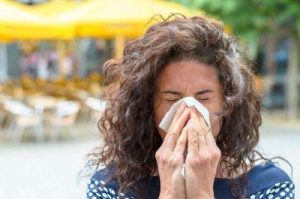 You can usually recognize sinusitis by facial pain when you lean forward. For some, it also feels like they have a toothache in their upper jaw. Other symptoms include a stuffy nose, purulent nasal discharge, a feeling of pressure in the sinuses, and a poor sense of smell.
You can usually recognize sinusitis by facial pain when you lean forward. For some, it also feels like they have a toothache in their upper jaw. Other symptoms include a stuffy nose, purulent nasal discharge, a feeling of pressure in the sinuses, and a poor sense of smell.
The following factors favor the development of sinusitis:
- frequently recurring infections
- Tooth root inflammation
- Allergies or food intolerances (play a role in about 50% of all cases!)
- Curvature of the nasal septum
- Nasal polyps
- mental stress
- incorrect use of decongestant nasal spray
Decongestant nasal sprays and drops impair the mucosal environment in the nose and sinuses and thus also the local defense mechanisms.
What to do for sinusitis?
- Nasal rinses with saline solution
- Steam baths
- Red light
- Phytotherapy
- Intestinal rehabilitation (especially in case of recurrent infections)
Bronchitis
 By bronchitis, physicians understand an inflammation of the mucous membrane in the bronchial tubes. This is accompanied and often preceded by inflammation of the upper respiratory tract. In 90% of cases, viruses are the culprit. These can paralyze or even destroy the cilia, so that the bronchial mucus is removed only slowly or not at all. The body tries to clear the airways again by coughing. Sputum is produced. Inflammation of the bronchial tubes is usually accompanied by fever and other typical symptoms of a cold. Natural remedies such as vital mushrooms can provide relief and improve the overall condition of those affected.
According to WHO, chronic bronchitis is when there is sputum and cough on the majority of days for a period of at least three months for two consecutive years. Typical for chronic bronchitis are strong coughing fits in the morning. In addition, there is a lot of mucus of viscous consistency. Due to the ongoing inflammation in the bronchial tubes, the ciliated epithelium gradually breaks down. Newly formed mucus is hardly removed. Especially not if the bronchial musculature also cramps, as in the case of so-called obstructive bronchitis. This is associated with an increased risk of more serious respiratory diseases such as COPD.
By bronchitis, physicians understand an inflammation of the mucous membrane in the bronchial tubes. This is accompanied and often preceded by inflammation of the upper respiratory tract. In 90% of cases, viruses are the culprit. These can paralyze or even destroy the cilia, so that the bronchial mucus is removed only slowly or not at all. The body tries to clear the airways again by coughing. Sputum is produced. Inflammation of the bronchial tubes is usually accompanied by fever and other typical symptoms of a cold. Natural remedies such as vital mushrooms can provide relief and improve the overall condition of those affected.
According to WHO, chronic bronchitis is when there is sputum and cough on the majority of days for a period of at least three months for two consecutive years. Typical for chronic bronchitis are strong coughing fits in the morning. In addition, there is a lot of mucus of viscous consistency. Due to the ongoing inflammation in the bronchial tubes, the ciliated epithelium gradually breaks down. Newly formed mucus is hardly removed. Especially not if the bronchial musculature also cramps, as in the case of so-called obstructive bronchitis. This is associated with an increased risk of more serious respiratory diseases such as COPD. How can bronchitis be treated?
To cure acute bronchitis naturally is quite possible. Even with chronic bronchitis, the following natural remedies can bring great relief:
- Quit smoking
- Immunotherapy and anti-inflammatory therapy, e.g. with vital mushrooms
- Chest compress (herbs, potato, curd)
- Respiratory therapy
- Intestinal composition with probiotics and bitter substances
- Avoiding foods that cause mucus, e.g. milk
Asthma
Bronchial asthma is a chronic disease of the respiratory tract. Typical symptoms are whistling breathing, dry cough and so-called asthma attacks. A feeling of tightness builds up in the chest and breathing can be extremely difficult for those affected. This seizure-like shortness of breath can last from a few minutes to several hours.
Who gets asthma?
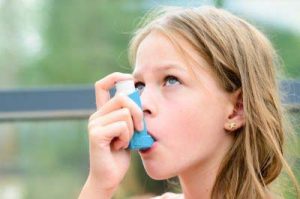 In Germany, asthma affects between 10 and 15% of children and 5 to 7% of adults. In childhood, it is considered the most common chronic disease of all. Boys are affected twice as often as girls. In adulthood, on the other hand, more women than men suffer from asthma. While allergic asthma dominates in children, non-allergic asthma is more common in adults, but the mixed form is most common.
In Germany, asthma affects between 10 and 15% of children and 5 to 7% of adults. In childhood, it is considered the most common chronic disease of all. Boys are affected twice as often as girls. In adulthood, on the other hand, more women than men suffer from asthma. While allergic asthma dominates in children, non-allergic asthma is more common in adults, but the mixed form is most common.
How does asthma manifest itself?
COPD
The abbreviation COPD stands for “chronic obstructive pulmonary disease”. In German, it translates as “chronic obstructive pulmonary disease.”
A chronic inflammatory process in the bronchi destroys the ciliated epithelium. This severely impairs the self-cleaning mechanism (mucociliary clearance) of the airways. More and more mucus accumulates in the bronchial tubes, which can only be transported out very poorly due to additional cramping of the bronchial muscles. This creates a pathological environment in which viruses and especially bacteria can spread with increasing frequency. Such infections usually lead to a drastic deterioration of the bronchial situation.
Symptoms of COPD are:
- Cough
- Ejection
- Shortness of breath (especially exhalation is obstructed)
- Power drop
- Weight loss (decrease in muscle mass and bone density due to testosterone and growth hormone deficiencies).
- mental problems
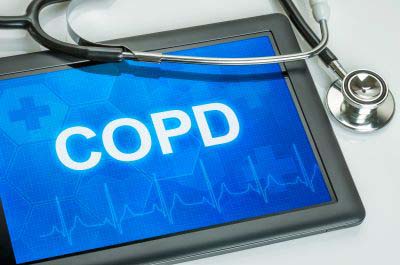
Who is affected by COPD?
It is estimated that eight to twelve percent of the population in Germany is affected by COPD, which is also commonly referred to as “smoker’s lung”. In fact, one of the main causes is smoking. However, occupational exposures to fumes, chemicals, dust, or other pollutants can also play a role in COPD disorders. Female smokers are more likely to develop COPD than male smokers. Another, but very rare, cause of COPD is congenital alpha-1 antitrypsin deficiency. Antitrypsin normally inactivates proteases that cause inflammatory processes in the airways. If it is missing, chronic inflammation can destroy the bronchial tubes in the long term. COPD is a disease that is not limited to the respiratory tract, but can affect the entire organism. Inflammatory processes appear to extend systemically and may cause other symptoms such as muscle wasting, weight loss, osteoporosis, type II diabetes mellitus, and anemia. COPD patients are also more affected by depression.
What helps with COPD?
- Quit smoking
- Immune training
- Lung Sports
- Breathing training
- Long-term oxygen therapy
- healthy diet
Pulmonary emphysema
In emphysema, chronic inflammation gradually destroys the alveoli irreversibly. When sufferers complete breaths, both the alveoli and the small bronchi collapse. This primarily impedes exhalation and causes the lungs to become more and more inflated. 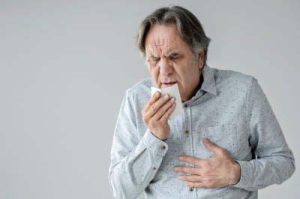 In addition to COPD, asthma can also be a causative factor for emphysema. In general, the disease is often preceded by heavy exposure to pollutants or tobacco use. Since prevention is so important here, risk factors must be eliminated as early as possible. In addition, strengthening the immune system is central.
In addition to COPD, asthma can also be a causative factor for emphysema. In general, the disease is often preceded by heavy exposure to pollutants or tobacco use. Since prevention is so important here, risk factors must be eliminated as early as possible. In addition, strengthening the immune system is central.
What to do about emphysema?
In principle, the same measures help with emphysema as with COPD. The goal of each treatment is to widen the narrowed airways and increase mucociliary clearance. Affected persons should be informed in detail about their disease. By means of certain breathing techniques and targeted measures to cough up the mucus, additional relief can be achieved. Medicinal mushrooms also help to improve the quality of life in this respiratory disease.
What natural remedies help with respiratory diseases?
Respiratory diseases are usually accompanied by very debilitating, sometimes even life-threatening symptoms. Through naturopathic therapies, these can usually be very well alleviated and help those affected to have a better quality of life. However, the therapeutic goal should be to address the causes as well. Only this can reduce the recurrent occurrence of complaints or chronic conditions. Medicinal mushrooms are suitable for therapeutic use both in acute cases and in the long term to achieve profound improvement. Here you can learn how to harness the power of nature!
Strengthen the immune system
Nourish the kidneys and mucous membranes
The classic kidney tea is the natural remedy of choice for a cold. In general, it provides relief for all respiratory diseases related to chills and cold. According to TCM, it stimulates the flow 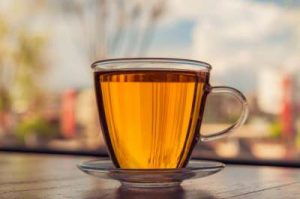 of kidney energy and should ideally be drunk between 5 and 7 pm. By the way, grandmother’s chicken soup also has its justification for respiratory infections. It contains an extra portion of zinc for a well-functioning immune system. In addition, blood circulation-stimulating or antibiotic ingredients such as chili, garlic and ginger provide faster relief of symptoms. Also, do nasal rinses with physiological saline solution and avoid decongestant nose drops.
of kidney energy and should ideally be drunk between 5 and 7 pm. By the way, grandmother’s chicken soup also has its justification for respiratory infections. It contains an extra portion of zinc for a well-functioning immune system. In addition, blood circulation-stimulating or antibiotic ingredients such as chili, garlic and ginger provide faster relief of symptoms. Also, do nasal rinses with physiological saline solution and avoid decongestant nose drops.
Which medicinal mushrooms help with respiratory diseases?
- immunomodulating and -activating
- anti-inflammatory
- antiviral and antibacterial
- antioxidant
- detoxifying
- prebiotic
- Mucosa protective (increased sIg A)
- relaxing
- Positively regulating neurotransmitters and stress hormones
Vital mushroom Cordyceps
 According to TCM, weak kidney energy is considered causative for cold feet, which in turn increase the body’s susceptibility to respiratory diseases and infections. Because of its strengthening effect on the lungs, cordyceps is often used for all lung diseases. It has also proven to be very valuable in relieving asthmatic symptoms with shortness of breath. It is also the natural remedy of choice in alternative medicine for bronchitis, rhinitis, sinusitis, tonsillitis and colds.
The positive effect of cordyceps can be attributed to several mechanisms. Thus, on the one hand, it strengthens the immune system itself due to its contained beta-glucans, and on the other hand, it has antiviral, anti-inflammatory as well as antioxidant effects. Responsible for this is the increased cordycepin found in Cordyceps militaris. Cordyceps also protects the respiratory tract from bacterial attacks and counteracts fibrosis of the lungs, which can be triggered by chronic stress (inflammation, pollutants).
According to TCM, weak kidney energy is considered causative for cold feet, which in turn increase the body’s susceptibility to respiratory diseases and infections. Because of its strengthening effect on the lungs, cordyceps is often used for all lung diseases. It has also proven to be very valuable in relieving asthmatic symptoms with shortness of breath. It is also the natural remedy of choice in alternative medicine for bronchitis, rhinitis, sinusitis, tonsillitis and colds.
The positive effect of cordyceps can be attributed to several mechanisms. Thus, on the one hand, it strengthens the immune system itself due to its contained beta-glucans, and on the other hand, it has antiviral, anti-inflammatory as well as antioxidant effects. Responsible for this is the increased cordycepin found in Cordyceps militaris. Cordyceps also protects the respiratory tract from bacterial attacks and counteracts fibrosis of the lungs, which can be triggered by chronic stress (inflammation, pollutants). Vital mushroom Reishi
Like cordyceps, reishi is a time-honored TCM remedy for naturally curing respiratory diseases such as bronchitis. Mushrooms bring important trace elements that are significant for some immune mechanisms and also detoxification. Organic germanium is found in reishi, which enables red blood cells to carry more oxygen. Another key ingredient in reishi is triterpenes. They counteract inflammation of the mucous membranes, both acutely as part of an infection and in chronic respiratory conditions such as asthma or COPD. The triterpenes also inhibit the release of histamine on contact with allergens. The latter is especially helpful for allergy-related symptoms in the respiratory tract, allergic rhinitis or allergy-related asthma.
The strengthening effect on lungs and bronchial tubes unfolds the Reishi furthermore through its antioxidant properties. Inflammation, including that in the respiratory tract, causes oxidative stress. Medicinal mushrooms like Reishi have antioxidant effects especially because of the enzymes they contain. By reducing oxidative stress during an infection, the virulence of the pathogens can be significantly reduced and thus the infection can be overcome more quickly. In addition, the Reishi helps to “cleanse” the bronchial mucous membranes loaded with pollutants. In fact, it is a powerful detoxifying vital mushroom. This clearly benefits the mucosal environment. Pathogens have a hard time penetrating the strong mucosal barrier.
Reishi is also a tonic mushroom. It gives the organism new energy, which counteracts states of exhaustion in acute infections as well as chronic respiratory diseases. According to TCM teachings, the Reishi also expels heat and mucus from the body. It thus takes on the function of an expectorant to some extent, making it easier to cough up.
Vital mushroom Auricularia
Auricularia has a moisturizing effect on the mucous membranes. This predestines this fungus for use in coughs with bloody sputum as well as bleeding from the nose and gums resulting from dry mucous membranes. It relieves dry irritating cough.
Vital mushroom Hericium
Hericium is a proven natural remedy when it comes to fighting allergies. 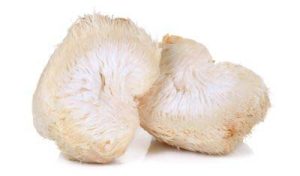 Its effect starts in the intestine: It supports the intestinal mucosa to regenerate quickly after an inflammation or ulceration. Its protective effect on the intestinal mucosa counteracts the development of leaky gut, which is often a cause of allergies. With regard to respiratory diseases, his focus is on allergy-related complaints such as allergic rhinitis or allergic asthma.
Its effect starts in the intestine: It supports the intestinal mucosa to regenerate quickly after an inflammation or ulceration. Its protective effect on the intestinal mucosa counteracts the development of leaky gut, which is often a cause of allergies. With regard to respiratory diseases, his focus is on allergy-related complaints such as allergic rhinitis or allergic asthma.
Vital mushroom Coriolus
As early as the 13th century, healers of the Ming Dynasty in China used Coriolus to strengthen the immune system of their patients. Today it is known that this effect is due to the glycoproteins PSK and PSP, which balance the defenses and thus ensure effective immune defense. For this reason, Coriolus is excellent for prophylaxis of viral infections and respiratory diseases in the cold season.
This fungus has both antiviral and antibacterial effects, and also antioxidant. This makes it predestined to protect the respiratory tract. According to TCM teachings, it is particularly effective in loosening stuck yellow-green mucus. Since it also nourishes the liver and kidney yin, it is considered the remedy of choice for impaired lung function, exhaustion, and chronic respiratory diseases.
Vital mushroom Agaricus blazei murrill (ABM)
Scientists were able to clearly demonstrate in studies on mice that the extract of the medicinal mushroom Agaricus blazei murrill (ABM) is effective against bacteria of the strain Streptococcus pneumoniae. Administration of ABM was able to prevent systemic spread of Streptocoocus pneumoniae infection in the mice. Streptococcus pneumoniae is the causative agent of pneumonia, sinusitis and otitis media. The antibacterial effect of ABM is primarily due to its beta-glucans. These activate the release of various interleukins and activate the complement cascade, thus supporting the work of the innate immune defense. In addition, ABM stimulates natural killer cells, which makes the fight against viruses more efficient.
Vital mushroom shiitake
Shiitake is also one of the medicinal mushrooms that can raise the energy level of the body, the Qi. That is why it is a good support in the regeneration phase after an illness. 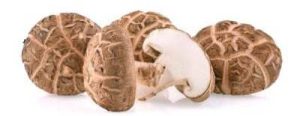 But its intake also reduces a susceptibility to colds, chronic cough and allergies. Studies show that this fungus significantly raises secretory immunoglobulin A, which is so important for mucosal defense. In general, it alleviates exhaustion caused by illness. It also has a moisturizing effect on the mucous membranes of the lungs and intestines, which is beneficial for the loosening of mucus.
But its intake also reduces a susceptibility to colds, chronic cough and allergies. Studies show that this fungus significantly raises secretory immunoglobulin A, which is so important for mucosal defense. In general, it alleviates exhaustion caused by illness. It also has a moisturizing effect on the mucous membranes of the lungs and intestines, which is beneficial for the loosening of mucus.
Vital mushroom Poria Cocos
This last vital mushroom in our series primarily strengthens the spleen. According to TCM, it is the central organ for the general energy of the body and is closely related to the lungs. By strengthening the spleen and its diuretic action, Poria expels excess moisture from the body. According to TCM teachings, this moisture condenses into mucus, which Asians consider an important pathogenic factor. The Poria has a significant expectorant effect in the respiratory tract both in the context of an infection and allergies.
Where can I get vital mushrooms against respiratory diseases?
Before looking for high quality medicinal mushrooms, it is important to clarify which ones are indicated in your particular case. Depending on the complaints, concomitant diseases and individual constitution, a different mixture of vital mushrooms is suitable. Likewise, the dosage must be determined precisely. Therefore, first contact a specialist in TCM, a mycotherapist or use our free telephone consultation.
Pay attention to high quality standards!
DO YOU HAVE ANY QUESTIONS?
We will gladly take time for you. In our free consultation, we answer all your health questions individually and personally. We are looking forward to meeting you!
